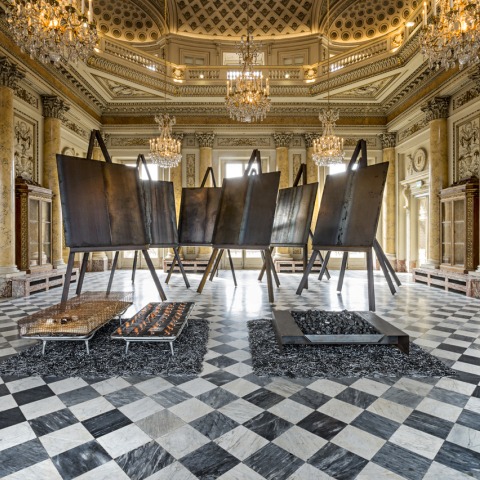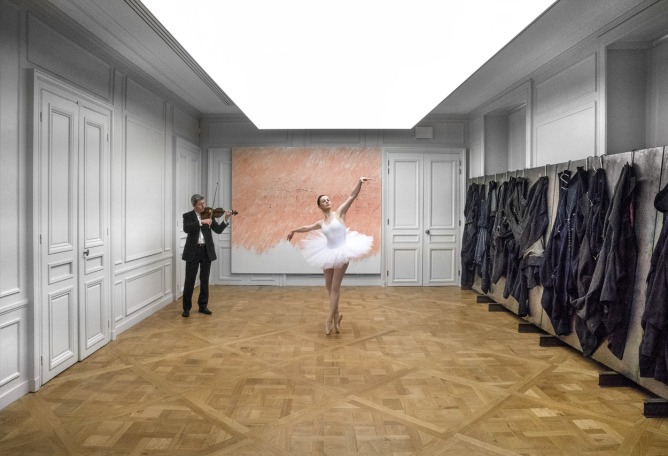"I desperately seek unity, albeit difficult to attain, albeit utopian, albeit impossible and therefore dramatic."
As a painter, Kounellis designed his exhibition at Monnaie de Paris as a fresco. he had already in 1972 crossed the boundaries of painting with Da inventare sul posto, a work accompanied by a dancer and a violonist.
In the 18th century Monnaie de Paris salons, the paintings are staged through an installation of metal trestles. This army of cold metal will captivate visitors with its size and the contrast with the architecture and décor of the Palace: columns, marble, ornaments, gilt...
Jannis Kounellis offers a true experience to visitors. He had already positioned living energy alive, animal or human, at the centre of his work with the incomparable 12 live horses in 1969. But also in Nabucco in 1970 or quarters of hanging meat, or the Stommeln Pullheim Synagogue exhibition where fish evolved into a plate threatened with a knife in 1991.
Kounellis is inspired by Monnaie de Paris, the oldest company in the world and part of the heart of the last factory in Paris where know-how and industry intermingle to create his "new project". The artist appeals to the visitor and raises the question of how a work is produced. It is in the technique, in the craft of the workshops, in the intuitive use of shapes and at the modelling stage that the artist's project for Monnaie de Paris is born. The work Libertà o Morte. W Marat W Robespierre, 1969 will be presented in the exhibition as well as Da inventare sul posto which will echo the beating heart of the coin presses of Monnaie de Paris, embodying the strength, the rhythm, the orchestration.
A special public program will be performed by Etel Adnan with poetry and musical sessions on 17 March and 28 April at 7pm. Retransmitted on RAM Radioartemobile and broadcast on the Monnaie de Paris website, these rendez-vous will form part of a unique selection of radio archives.





























